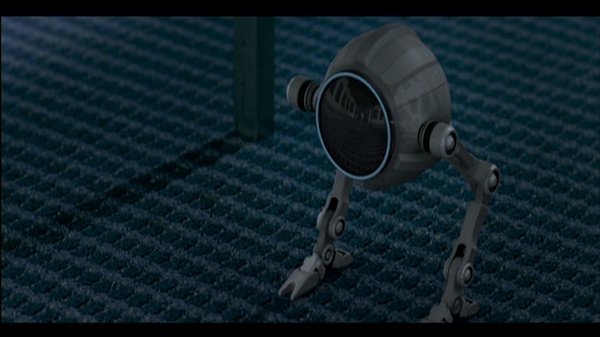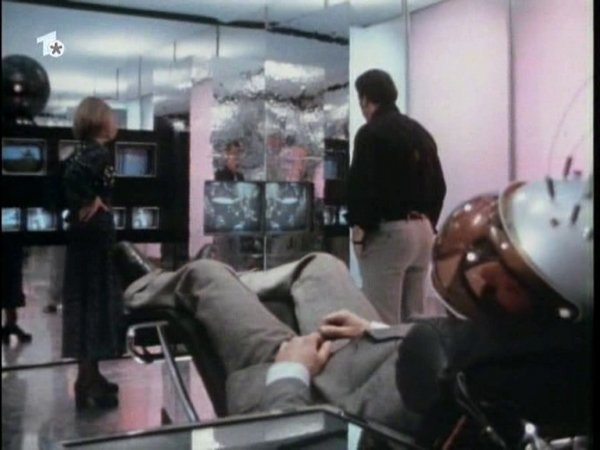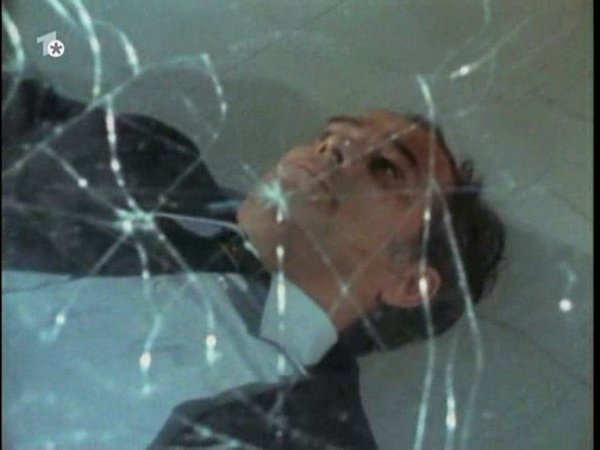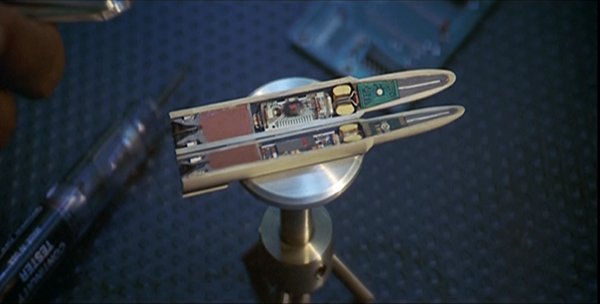Source: Life’s Little Mysteries

The scenario of a mechanized hostile takeover of humanity is a popular theme in sci-fi, but just how plausible is it? LLM’s Adam Hadhazy plays mythbuster.
Hollywood Hype. The nightmare of robots usurping humanity has become a staple of science fiction. But have you ever thought if such a scene is possible? Life’s Little Mysteries, the website dedicated to answering some of the more unusual tech questions, gives their opinion about the possibility of “robopocalypse.”
Even the experts seem divided. They believe man and machine will get along, but that relation can turn sour under the right conditions.
“The technology already exists to build a system that will destroy the whole world, intentionally or unintentionally, if it just detects the right conditions,” said Shlomo Zilberstein, a professor of computer science at the University of Massachusetts.
Military (Un)Intelligence. One scenario can be summed up in one word: Skynet. We have the technology to create it, so why not?
Nukes.
Currently, Predator drones in the Middle East have been getting more and more autonomy, more ability to make its own decision to attack a target. Even so, live humans still monitor its operation and can override the drone if needed. When humans tried to shut down Skynet, even the “allies” were determined to be “enemies” and let the nukes fly. The game plan to keep that from happening is to limit what weapons it has access to, and to limit its functionality to specific situations.

“All the systems we’re likely to build in the-near future will have specific abilities,” Zilberstein said. “They will be able to monitor a region and maybe shoot, but they will not replace a [human] general.”
That wouldn’t preclude the possibility of a robotic arms race, leading to both sides loosing control of their machines…
Revolution through evolution. Another scenario of mechanized takeover is not as violent as nuclear war; Humanity simply replaces itself part-by-part, shedding the meat in favor of metal. There would be some resistors (sic), but they’ll be allowed to die out by themselves.
Of course, someone… or something… needs to build those robots. With robots building cars, planes, etc., it won’t be to hard to imagine that robots can build robots, if they’re not doing it already. But when robots not only build robots, but run the whole factory, and possibly the whole infrastructure that humans also rely on, things can get real sticky real fast.
Busted, Plausible, or Confirmed? It would seem that humanity is teetering on the edge of robopocalypse, yet it is something that is easily avoidable:
Overall, a bit of wisdom would prevent humankind from falling into the traps dreamed up by Hollywood screenwriters. But the profit motive at companies has certainly engendered more automation, and the Cold War’s predication on the threat of mutually assured destruction points out that rationality does not always win.
LMM gives a score of 2 out of 4 “rocketboys.” If it was MythBusters, this would be called “Plausible.”
Military leaders and corporations probably will not be so stupid as to add high levels of programmed autonomy to catastrophically strong weapon systems and critical industrial sectors.
Given the levels of stupidity that military and corporations like to show, I’d say this is more than plausible.
This post has been filed under
Internet Find by Mr. Roboto.
Movie Review By: Mr. Roboto
Year: 1973
Directed by: Rainer Werner Fassbinder
Written by: Rainer Werner Fassbinder, Fritz Müller-Scherz, and Daniel F. Galouye (based on his novel “Simulacron-3″)
IMDB Reference
Degree of Cyberpunk Visuals: Low
Correlation to Cyberpunk Themes: High
Key Cast Members:
Fred Stiller: Klaus Löwitsch
Professor Henry Vollmer: Adrian Hoven
Günther Lause: Ivan Desny
Herbert Siskins: Karl Heinz Vosgerau
Eva Vollmer: Mascha Rabben
Gloria Fromm: Barbara Valentin
Franz Hahn: Wolfgang Schenck
Fritz Walfang: Günter Lamprecht
Rating: 9 out of 10

In Welt am Draht (World on a Wire), going into a simulation is referred to as “going downstairs” while coming out is “going upstairs.”
Overview: You think you might have seen every VR-based movie, or know what to expect after watching The Matrix or Lawnmower Man for the thousandth time. Then someone points you to some rare foreign TV miniseries, and suddenly… WHOA! The Matrix doesn’t seem so original anymore, at least in terms of concept.
Transmit ACK signal to “virtual reality 91″ for mentioning this one (just needed some time to research and download). World on a Wire is a two-part TV movie originally called Welt am Draht when it first premiered in West Germany. Since then, other VR movies short and long have come and gone. While still available via file-sharing and torrent, a recently restored version has been appearing at film festivals world wide and a Blu-Ray version is set to drop this month.
The Story: At The Institute for Kybernetik und Zukunftsforschung (Institute for Cybernetics and Future Sciences), or IKZ, Professor Henry Vollmer has created a simulated world containing some 8,000 “identity units”; Virtual humans not knowing that they are living in a simulation, except for the “contact unit” named Einstein who is needed to keep the simulation running. Vollmer tries to tell security chief Lause about a discovery regarding the simulation that he wants to keep secret “Because it would mean the end of this world.” Vollmer dies shortly after and Stiller takes over as the project’s technical director. At a party, Lause wants to tell Stiller what Vollmer had told him, but while Stiller is momentarily distracted Lause vanishes, and every one else suddenly has no memory of him, including Lause’s niece, Eva Vollmer. When one of the identity units tries to commit suicide it is deleted, prompting Stiller to “enter” the simulation to contact Einstein to find out why the unit tried to kill itself. When they meet again, Einstein is in Walfang’s body where he explains how he wants to be human… and how “reality” as Stiller knows it isn’t.
German Engineering. So the Simulacron computer system isn’t exactly 21st centruy, bleeding edge technology. This is a 1970’s era movie after all. So there’s no fancy gun-fu shootouts with CGI enhanced slow-motion effects, rotoscoped armor to guard against laser-edged Frisbees, or pixelated sex between Unix GUI daemons.
But Welt am Draht isn’t about fancy high tech special effects. It’s about one man’s reaction when he discovers the truth about reality… his reality, as he perceives it. We watch Stiller’s struggle to keep his sanity in a world that seems to be designed for the purpose of destroying him. A Kafkaesque nightmare encoded in silicon, and his attempt to escape it. And if he does escape, has he really escaped… or just entered a new level of the nightmare?

What we see now is like a dim image in a mirror. Then we shall see face to face.
Mirror’s edge. The main effect of the movie, especially in part one, is a shot of an image in a mirror or similar reflective surface. This gives an extra disorienting feeling as we ponder if reality really is reality, and how do they manage to get all those mirror-shots without the film crew appearing in the reflections. Low tech, highly effective.
But unless you can speak German well enough, you might miss some of the mirror-shots while trying to read the subtitles. That’s the only thing keeping this from being a perfect 10. Then again, subtitles probably would be better than dubbing that comes out as “all your wiener schnitzel are belong to us.”

Is it live? Or is it simulated?
Conclusion: From the country that gave the world cruise and ballistic missiles, Fahrvergnügen, and Kraftwerk, Germany shows that they can come up with some inventive… and scary… technology. Welt am Draht is one of those rare pre-cyberpunk cyberpunk movies that needs to be seen to be believed. Especially when more recent films have aped the idea of VR with high-end graphic trickery, this one is enough proof that high-end does not mean high-quality.
Source: Sandia Labs, via TechCrunch and Mashable.

“The back half is all solid propellant. There’s different valves for directional control. The nose is all electronic. You’ve heard of a bullet that has your name on it? Well, this one really does.” (Marvin James (played by Stan Shaw).
Hollywood may sue over this! There’s more shit about to hit the fan if it hasn’t already, I’ll be blogging more on that by the weekend. But Hollywood might want to know that not only are whole movies being pirated, but companies are stealing the technology from within them.
Specifically, Runaway’s “smart” missile-bullets. Sandia National Labs has developed a self-guided bullet (a “micro-missile” might be a better description) that can hit a target a mile away. Now they’re looking for a partner to further develop and bring the new ammo to market.

Not exactly the smartest bullet, but being able guide itself within 8 inches of a target 1000 yards away makes regular bullets look like dumbasses.
A more sophisticated way to wake up dead. The bullet is essentially a laser-guided missile; You point your laser-pointer at your target and the bullet’s optronics does the rest… assuming you pull the trigger to send it on its way.
At four inches long, the prototype won’t fit your Saturday-night special. Also, it requires a smooth-bore barrel to launch out of. Most bullets need a rifled barrel to give them a gyroscopic-stabilizing spin, but the bullet-missile has fins that stabilize and even control its flight path.

An LED attached during a night test turns the smart bullet into a tracer round.
Just in time for ACTA signings. Given recent events over SOPA/PIPA, announcement of this bullet can either be a dream come true or a security nightmare. Potential customers for the bullet include the military, law enforcement and recreational shooters, so Sandia says. Of course, they’ll eventually find their way into the wrong hands. But first they need to be developed and brought to market first.
Will the missile-bullets be corner-turning heat-seekers like in the movie? Maybe future versions will have the ability to “pick” a target, or even be programmed for a specific target. Maybe a pheromone-guided, nuclear tipped version that can be fired from a 50-caliber gun can be made. Whenever Sandia announces the market version, they should get one man to “pull the trigger.”

This post has been filed under
News as Cyberpunk by Mr. Roboto.













